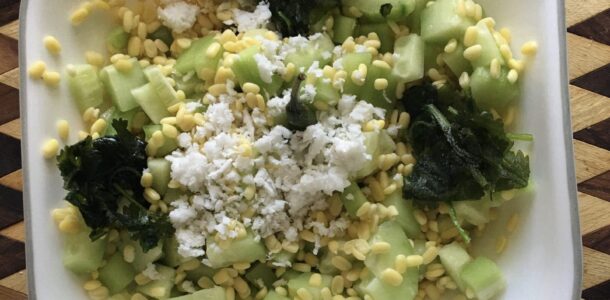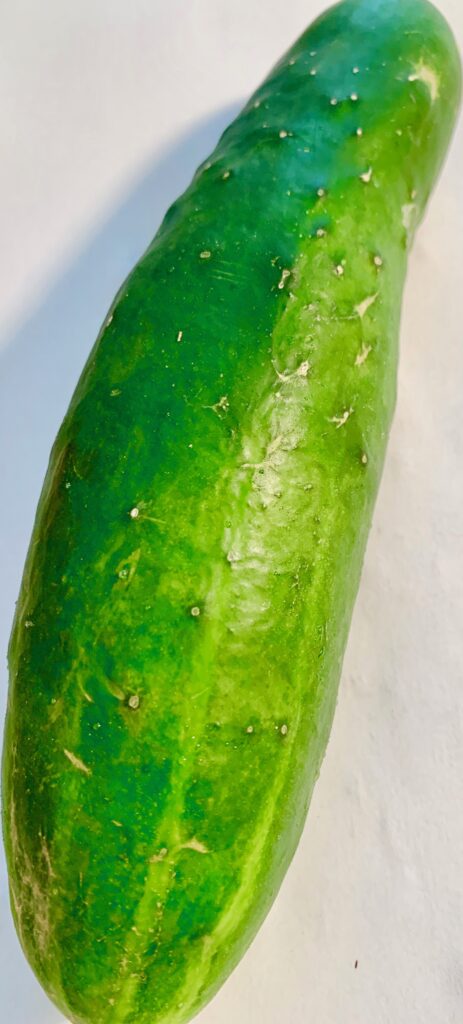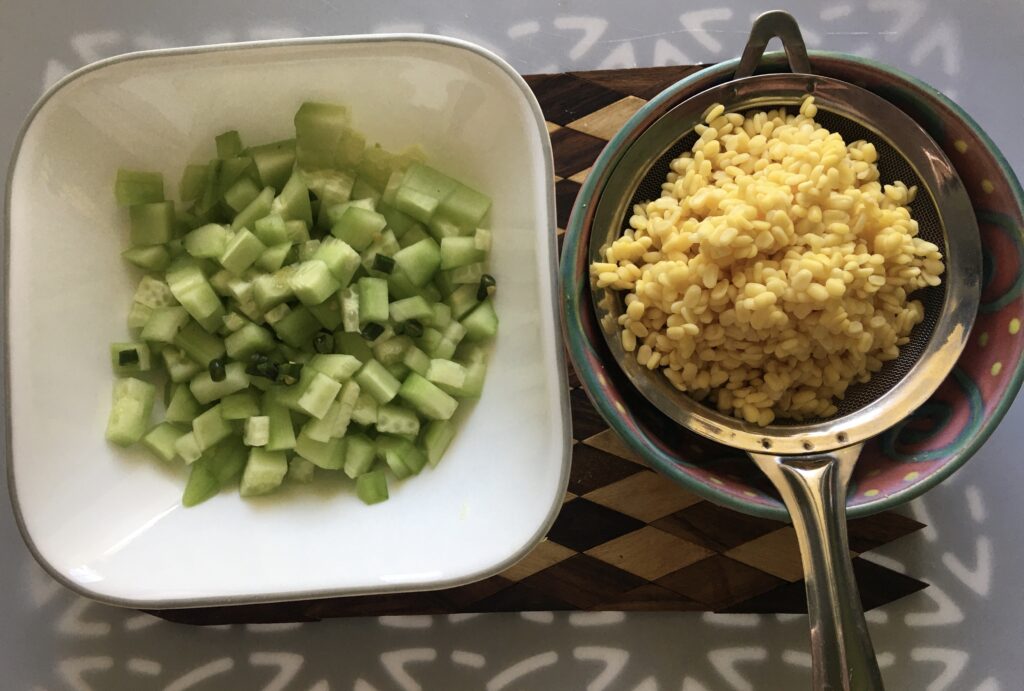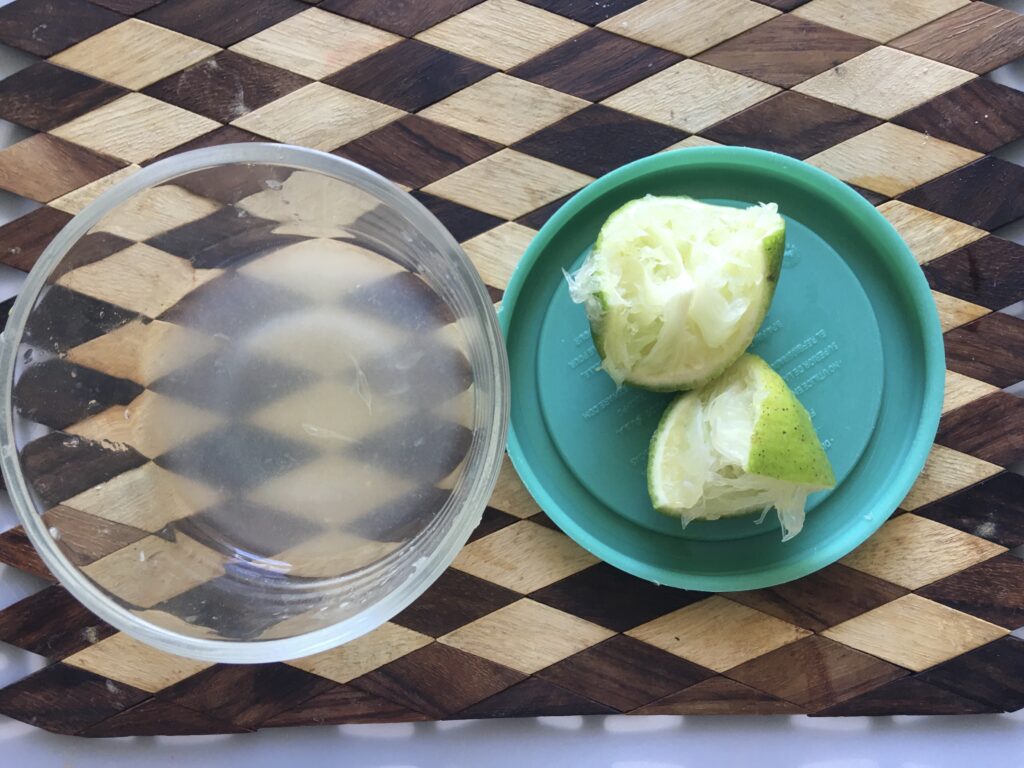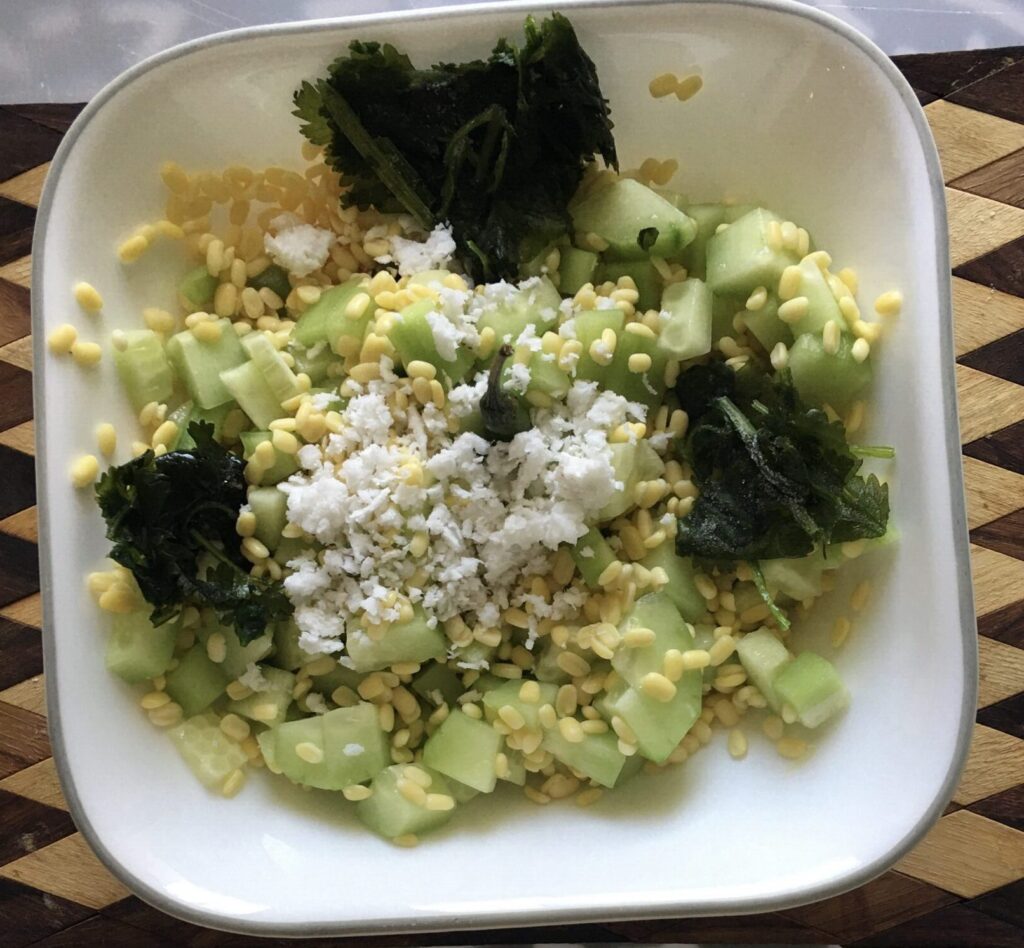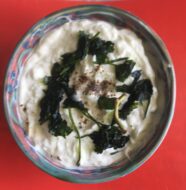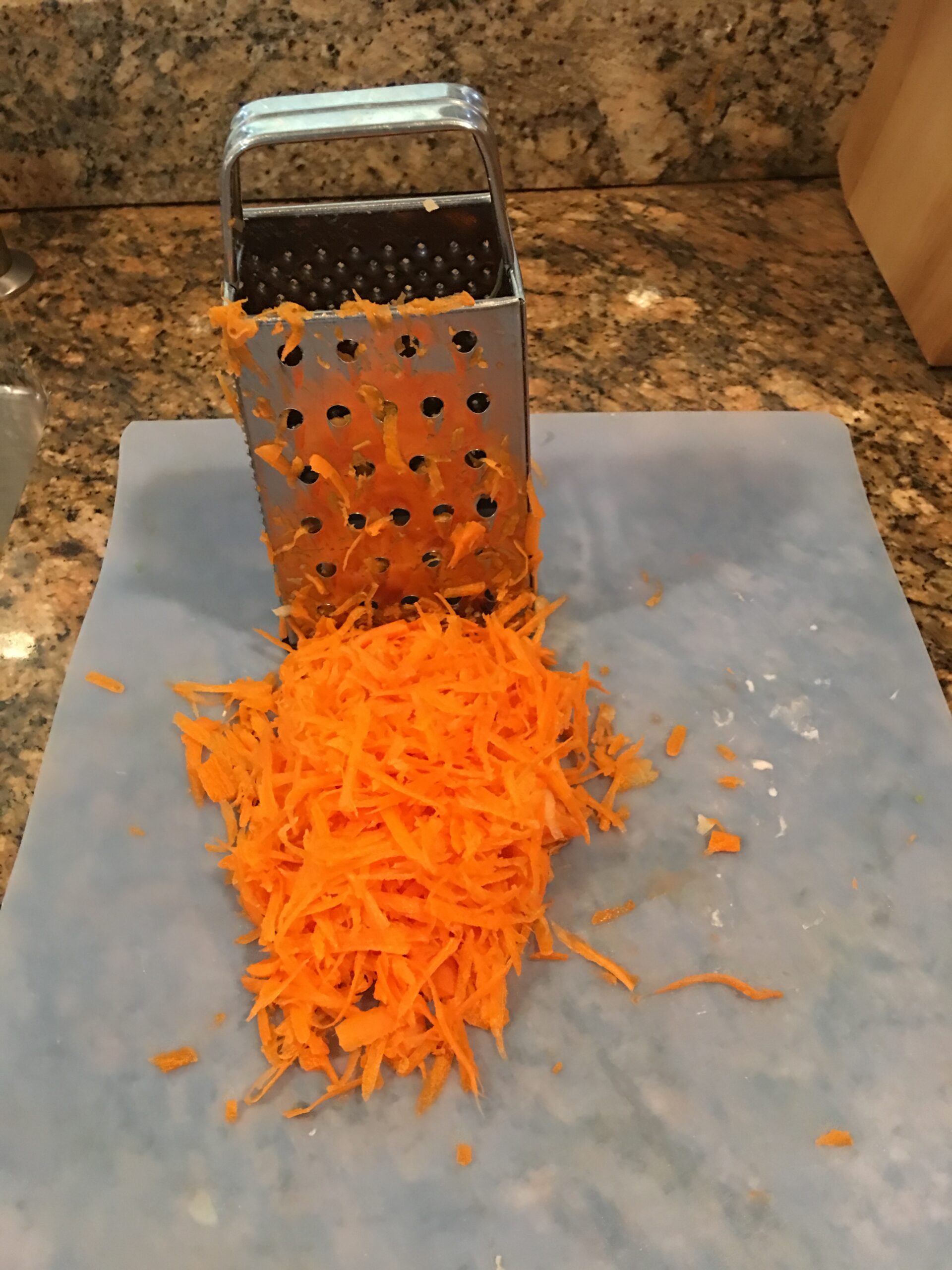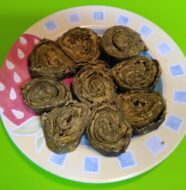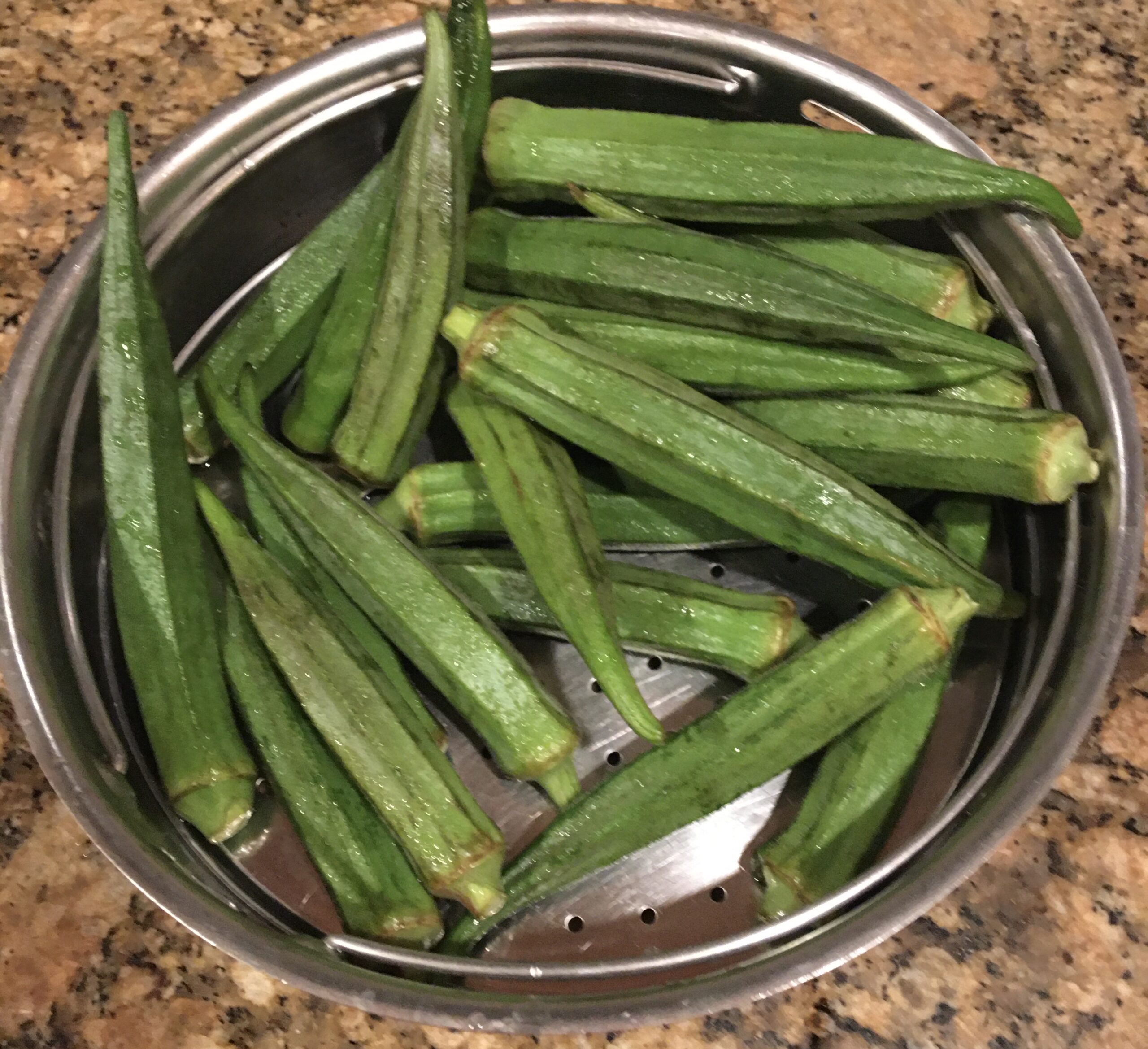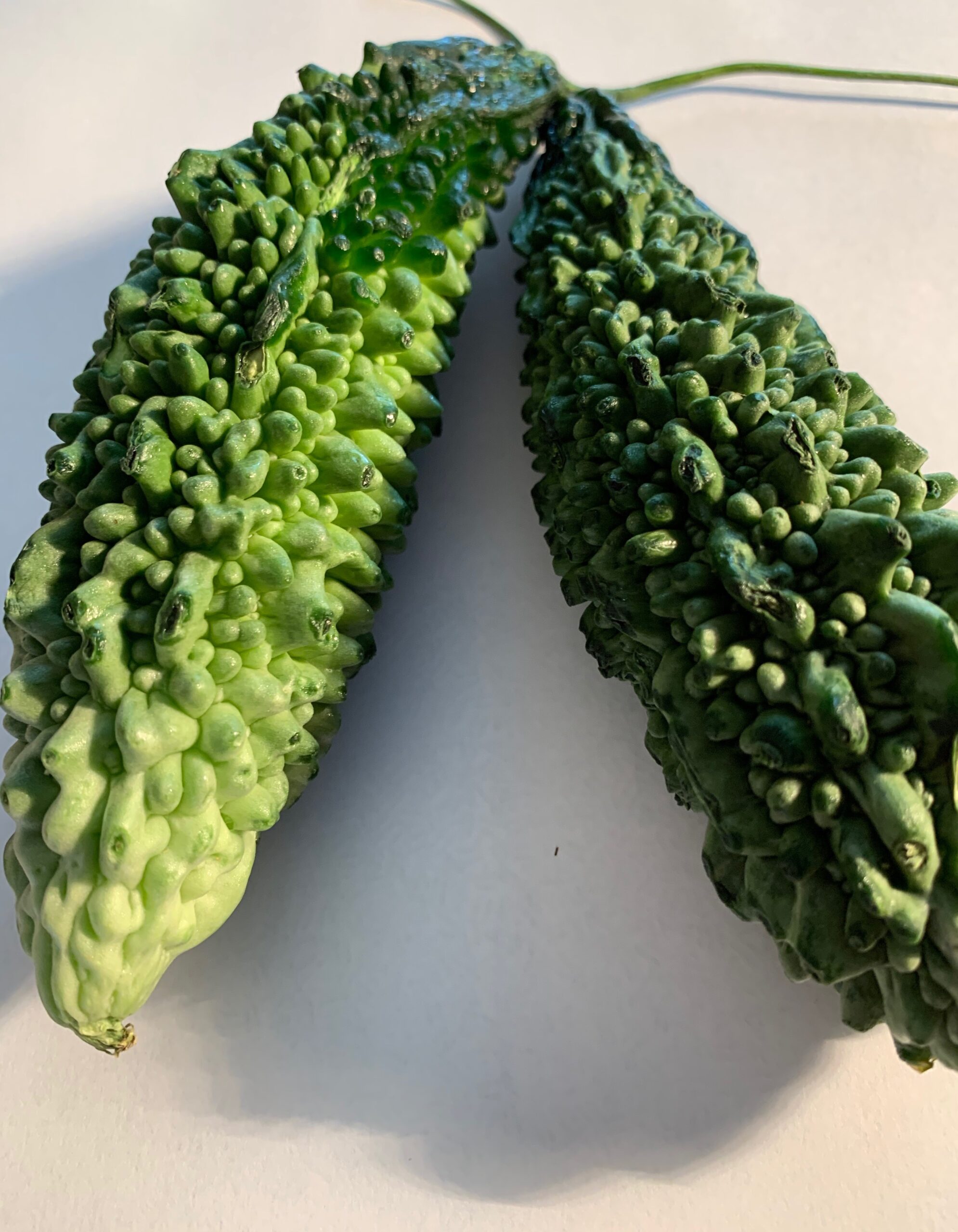Cucumber – scientific name “Cucumis Sativus”, had its origins in India and the 4th most cultivated vegetable in the world. It belongs to the gourd family (Cucurbitaceae) and is a long cylindrical green-skinned fruit. It has edible seeds surrounded by white edible flesh. Three main varieties of cucumbers “slicing, pickling and burpless” are grown. The English cucumber, which can grow up to 2 feet is virtually seedless.
Buying and storage Cucumbers are available all year long with the peak season from May to August. Choose firm fruit with smooth, brightly colored skins. Avoid those with shriveled or soft spots. Whole, unwashed cucumbers can be stored for 10 days in the refrigerator. They can be eaten with the skin unless it is waxed. The seeds turn bitter as the cucumber matures and should be removed. Cucumbers can be eaten raw in slices, made into salads like Raitha, Pachadi, or Kosmalli, or layered in sandwiches.
History: Cucumbers originated from ancient India where they grew in the wild 4000 years ago. Later on, Greek civilization embraced it and its usage spread to Turkey, Bulgaria, Africa, Serbia, and Italy. The Roman empire was where it was embraced by the nobility and lower classes. During the reign of Emperor Tiberius (14-16AD){who insisted on eating it every day of the year} cucumber growth was tended in special summer gardens and in winter in movable bed frames. After the fall of Rome, it lost its popularity for a long time.
Cucumbers resurfaced in the court of Charlemagne in the 8th & 9th century and arrived in England in the 14th century. The first interaction with the English was not successful but cucumbers returned in the 17th century when they managed to take hold.
European trappers introduced cucumbers to the Native Americans in the Great Plains and the Rocky mountains. Those tribes saw the potential and nutritious value of cucumbers and quickly integrated them into their fields. The best Native American farmers were located on the lands of modern North and South Dakota.
http://www.vegetablefacts.net/vegetable-history/history-of-cucumbers/
Cucumber Recipes
Cucumber Yogurt Salad (( Raitha)
Cucumber Salad with Lentils (Kosmalli)
Cucumber Canoes ( Naav)
Cucumber Pickle (in vinegar)
Cucumber Squash in Tamarind Sauce (Vellarikai Puli Pachadi)
Gherkins Sauté (Tindora Subzee)
Nutrition Facts of Cucumber
(Cucumis Sativus)
| GI =15; GL=1 Water = 95.2 g |
Minerals | Vitamins |
| Energy 12kcal -<1% | Sodium 2mg – 0% | Folates 14mug – 3.5% |
| Carb. 2.16 g -1.6 % | Potassium 136 mg – 3% | Niacin 0.037mg – <1% |
| Protein 0.59g -1% | Calcium 14mg – 1.4% | Pantothenic acid 0.259mg – 5% |
| Total Fat 0.16g – 0.75% | Iron 0.22mg -3.5% | Pyridoxine 0.051 mg – 4% |
| Cholesterol 0mg – 0% | Magnesium12mg – 3% | Riboflavin 0.025mg – 2 % |
| Dietary Fiber 0.7g – 2 % | Manganese 0.079mg – 3.5% | Thiamin0.031mg – 2.5 % |
| Carotene Beta 31 mug | Phosphorous 21 mg – 3% | Vitamin A 12 IU <1% |
| Crypto xanthin Beta – 18 mug | Zinc 0.17mg – 1.5% | Vitamin C 3.2mg -&% |
| Lutein zeaxanthin – 16mug | Vitamin E 0.03mg _ 0 % | |
| Vitamin K – 7.2 mug – 6% |
Health Benefits of Cucumber
- Weight loss: Cucumber is a powerhouse of antioxidants, low in calories, and boosts metabolism resulting in weight loss for those weight watchers.
- Hydrate your body: Cucumber is made up of 95% water that boosts hydration. Two compounds ascorbic acid and caffeic acid prevent water retention.
- Good for heart health: They contain plant hormones ( Lariciresinol) that help reduce the risk of heart disease.
- Reduce the risk of cancer plant lignans Pino Resinothree lignans have shown ability to reduce the risk of breast, colon, ovarian, and uterine cancer.
- Detox properties: Due to its high water content cucumber juice cleanses the body by flushing toxic and old waste materials. It makes a powerful detox drink.
- Good for the gut: Cucumber contains Erepsin a digestive enzyme that helps to break down protein. It also has antiparasitic properties that help cleanse and tone the intestines.
- Regulate cholesterol: cucumbers contain beneficial plant sterols that are known to lower bad cholesterol levels.
- Diuretic action: Cucumber’s mild diuretic action helps soothe constipation. Its ability to balance water in the body makes it a boon for heart and kidney problems.
- Boosts urinary function: nutrients in cucumber help dissolve uric acid accumulations and can aid the treatment of kidney and bladder stones.
- Regulates blood pressure: Cucumber contains potassium and magnesium which can help prevent blood pressure. Potassium helps lower blood pressure by balancing the negative effects of salt.
- Skin Benefits: excellent source of silica the beauty mineral. Drinking cucumber juice gives you a healthy and rejuvenated skin from within. Placing cucumber slices on the eyes could help reduce the dark circles. Cucumber juice application can soothe tanned or sunburnt skin.
Spice & Herb Powers
- Mustard seeds: prevents cancer – contains glucosinolates that get converted to isothiocyanates with the help of myrosinase enzymes present in mustard, which help treat bladder, colon, and cervical cancer.
- Asafetida powder: relieves headache like migraines it can eliminate the tension and pain of headaches quite effectively by improving blood flow in the capillaries and removing excess free radicals.
- Green chili: aids in weight loss with 0 calories and revs up metabolism. Improves mood with capsaicin which releases feel-good endorphins, acting as an antidepressant.
- Lemon juice: vitamin C and citric acid help absorb nonheme iron from plants which may prevent anemia. Improves digestive health with the pulp that has fiber.
- Coconut: supports immune system health with antibacterial, anti-viral, and anti-fungal properties. Provides a natural source of quick energy improving athletic performance.
- Cilantro leaves: the richest herbal source of vitamin K ( 310mcg – 258% RDA) which has a potential role in the bone mass building by promoting osteoblastic activity in the bones. Vitamin K can limit neuronal damage to the brain thus help treat Alzheimer patients.
Method to make Cucumber Salad with lentils
- Wash and soak mung lentils in hot water.( 10 min.)
- While the lentils are soaking, peel and grate cucumber in the food processor. (2 min.)
- Add 1/2 tsp. salt to cucumber; mix well; keep aside. (5 min.)
- Squeeze excess juice from cucumber and place it in a bowl. (2 min.)
- Drain water from soaked mung lentils.
- Toss together lentils, cucumber, lemon juice, and 1/2 tsp. salt.
- Garnish with coconut and cilantro.
- Allow Kosmalli to marinate. (5 min.)
Sizzler / Tempering
- Heat oil in a small frying pan; add mustard seeds, asafetida, and chili. Remove from heat when seeds splutter; add to salad, stir well.
Serve Cucumber Lentils salad by itself or with Quinoa, Lemon rice, rolls, or Naan.
TIPS
Remedy: when chili gets too spicy add a pinch of sugar Variation: add grated carrots with cucumbers
Variation: substitute lentils with sprouted whole mung beans
Kosmalli = salad

